The Royal Guard Changing Ceremony at the Jeonju Gyeonggijeon Palace

The Gyeonggijeon Palace was built in 1410 to protect the royal portrait of Taejo, the founder of the Joseon Dynasty and to propagate the authority of the dynasty. The name ‘Gyeonggijeon’ means a palace built on an auspicious site. The palace was built in Jeonju, because the city is the hometown of the Joseon Dynasty’s royal family.

From Spring to Fall, the Gyeonggijeon Palace holds the royal guard changing ceremony every Saturday afternoon. The royal guards, also called ‘Sumunjang,’ used to guard the major gates of the city and palaces. They were highly skilled soldiers under the command of ‘Sumunjangchung,’ the royal guard department.

The royal guard changing ceremony of the Gyeonggijeon Palace was restored by the city of Jeonju to promote the city and palace as the historic birthplace of the Joseon Dynasty. The restoration of the ceremony in Jeonju has been inspired by the similar ceremonies held at the palaces in Seoul.
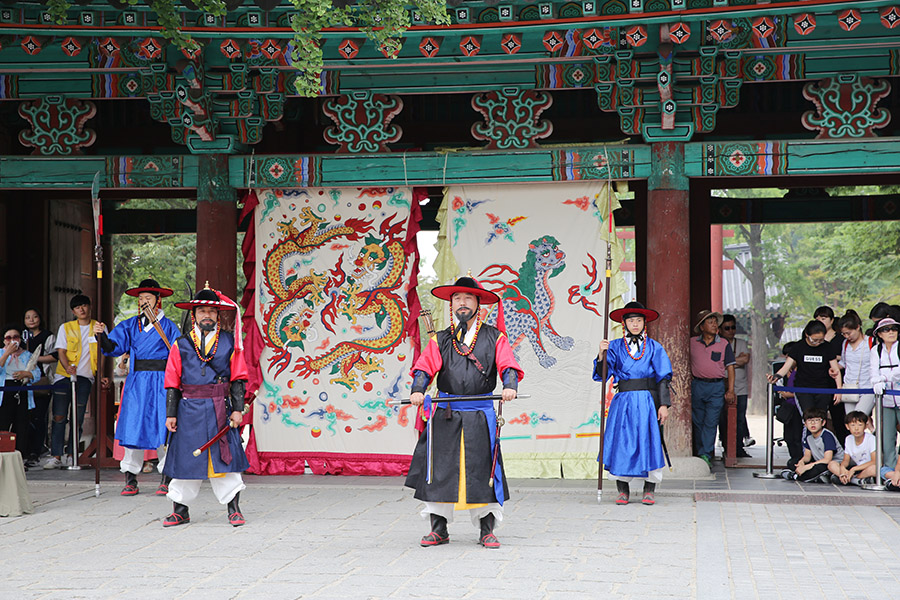
<Participants of the royal guard changing ceremony>
Sumunjang – defending the Gyeonggijeon Palace and commanding the guards
Jongsagwan – aiding Sumunjang and managing books
Junjik – supervising the ceremony
Sujongjang – managing and playing Daejonggo (drum)
Chung-uigun – guarding the gates of the palace
Kisudae – guarding the gates of the palace
Chuitagun – playing march
<Procedures for the royal guard changing ceremony>
- The mounting guards marched from Jeonju Sori Culture Center to the Gyeonggijeon Palace. The ceremony took place in front of the main gate.

- Exchange ‘challenge and password’ to identify each other
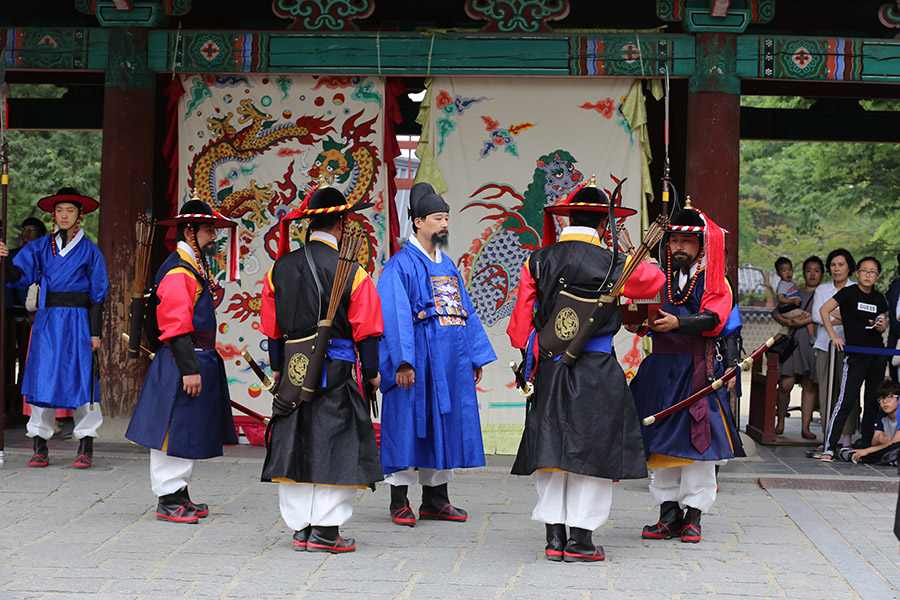
- The exchanging guards confirm the key box. The box is then handed over to the mounting guard.

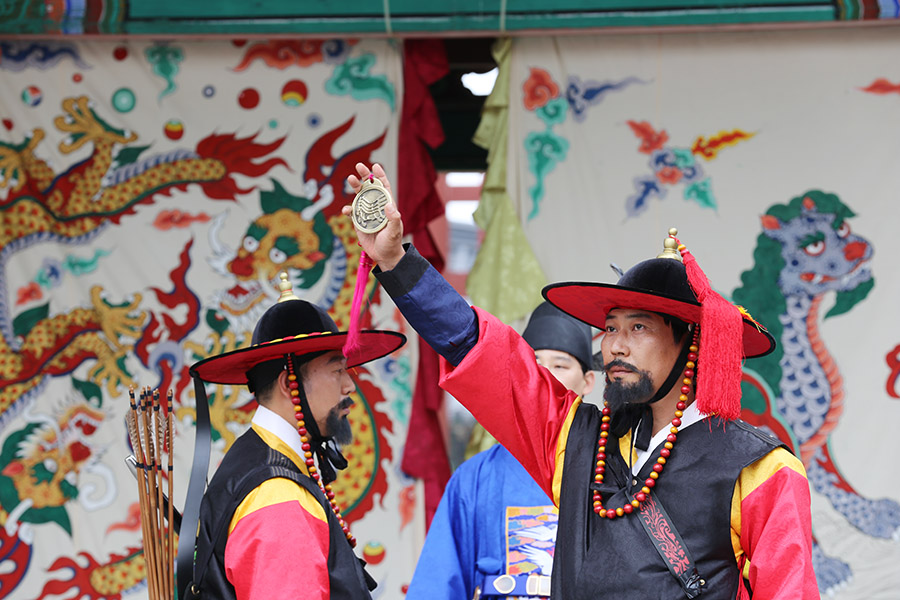
- To confirm the identities of each other, the guards also confirm that their bushin (a round piece of wood with a letter carved on it and cut into half) pieces fit together.
- The on-duty guards and the off-duty guards exchange their place.
- The off-duty guards march to the Jeonju Sori Culture Center with flag carriers and Chuitadae.
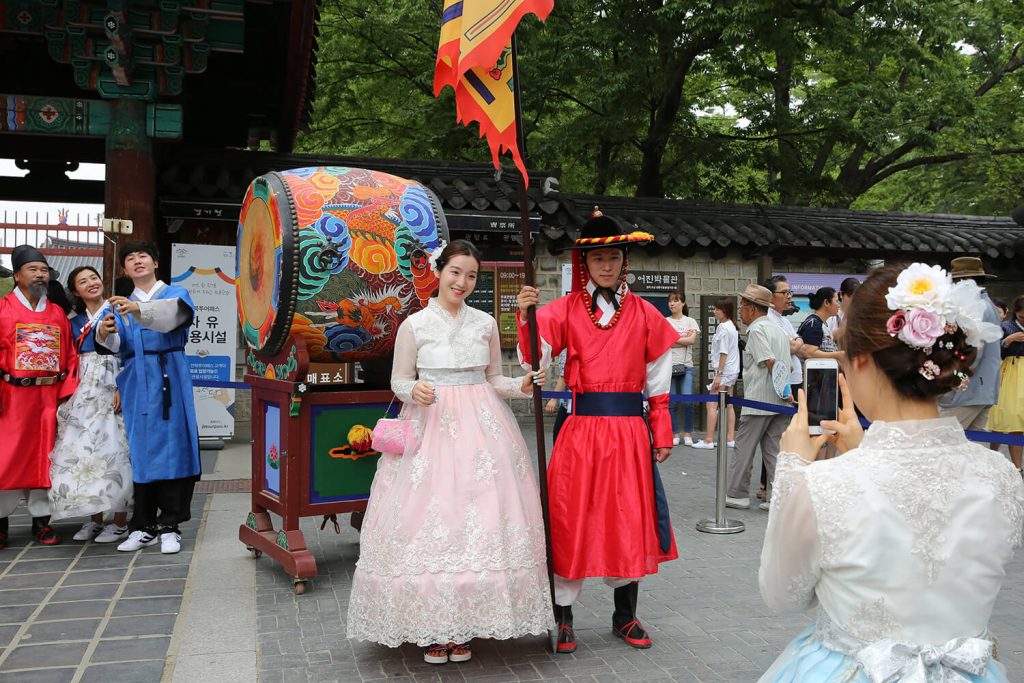
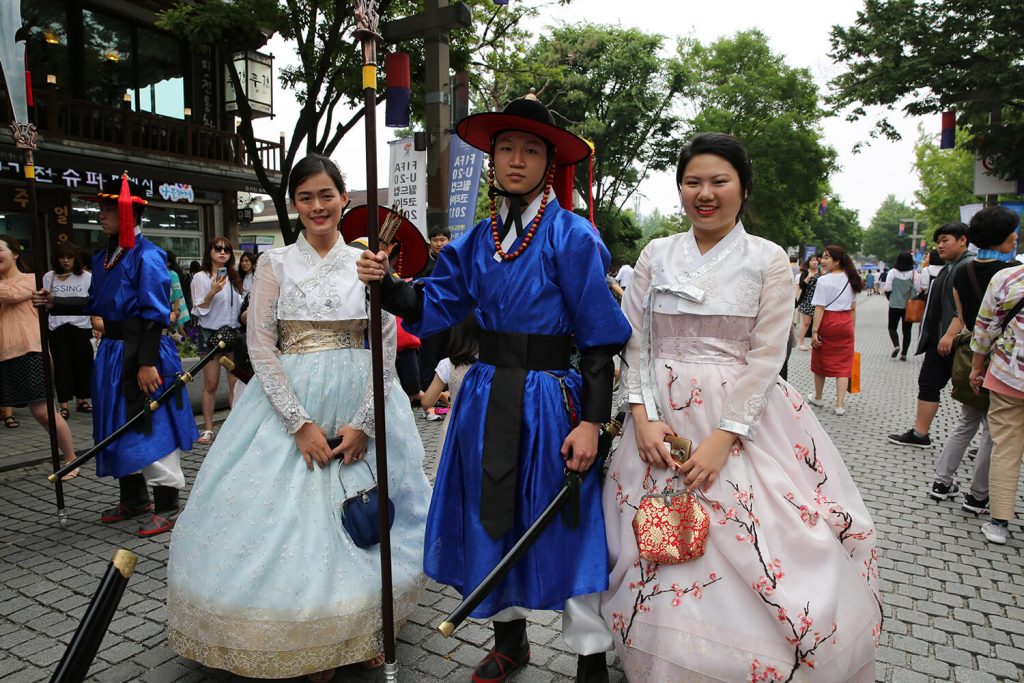
The tourists were able to take photos with the guards at the end of the ceremony. The guards were very friendly.

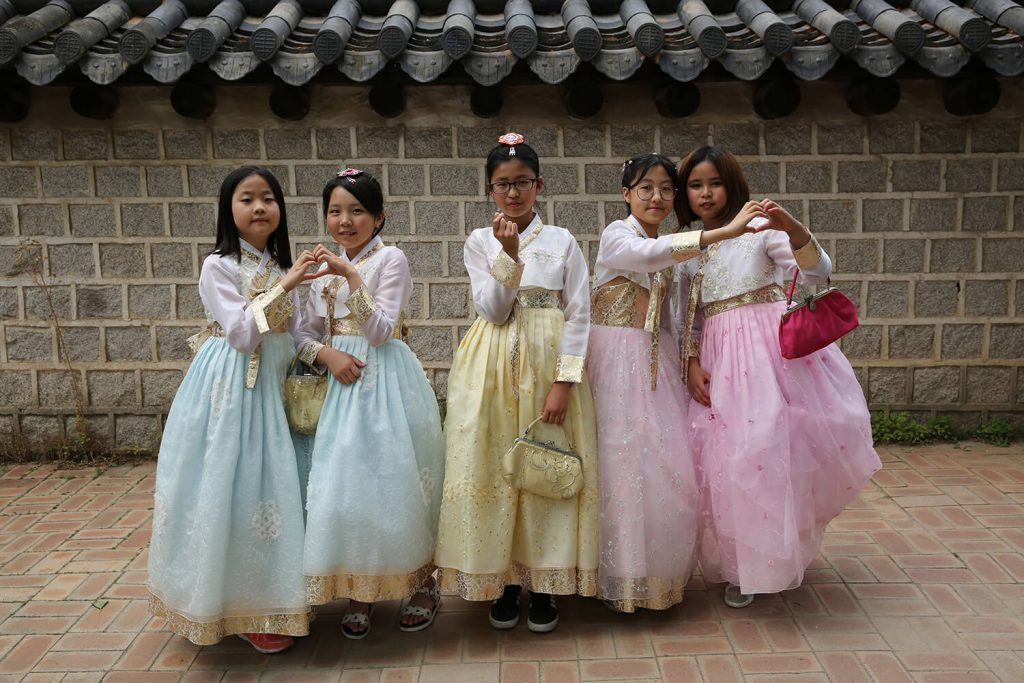
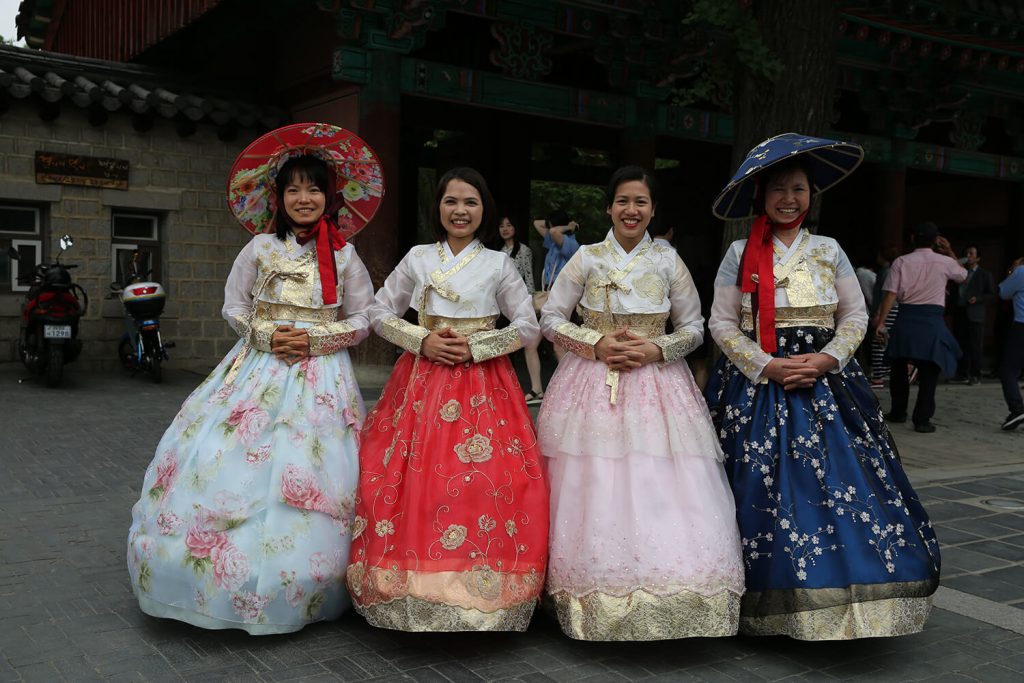

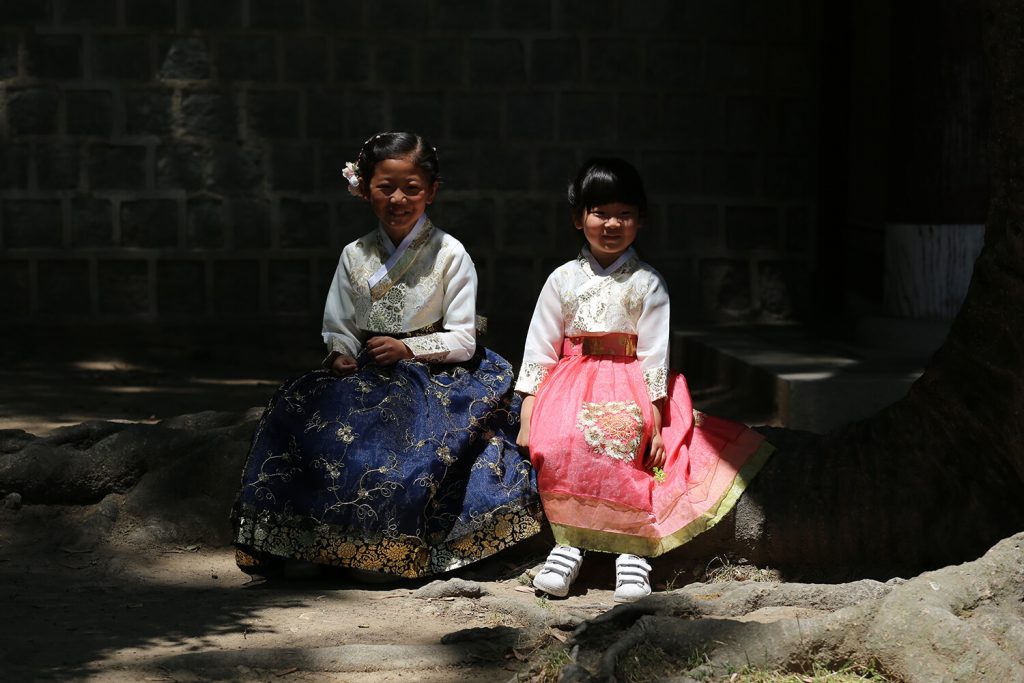
More than ten million people visit Jeonju Hanok Village per year. Many of the visitors, both Koreans and foreigners, love to walk around the village in Hanbok (Korean traditional costume). Here are the photos of those visitors wearing beautiful Hanbok I met in front of the Gyeonggijeon Palace

Crowds gathered at Taejoro, the main street of the Hanok Village. They were watching Jeonju Kijeop Nori (wielding huge flag with a dragon drawn on it).
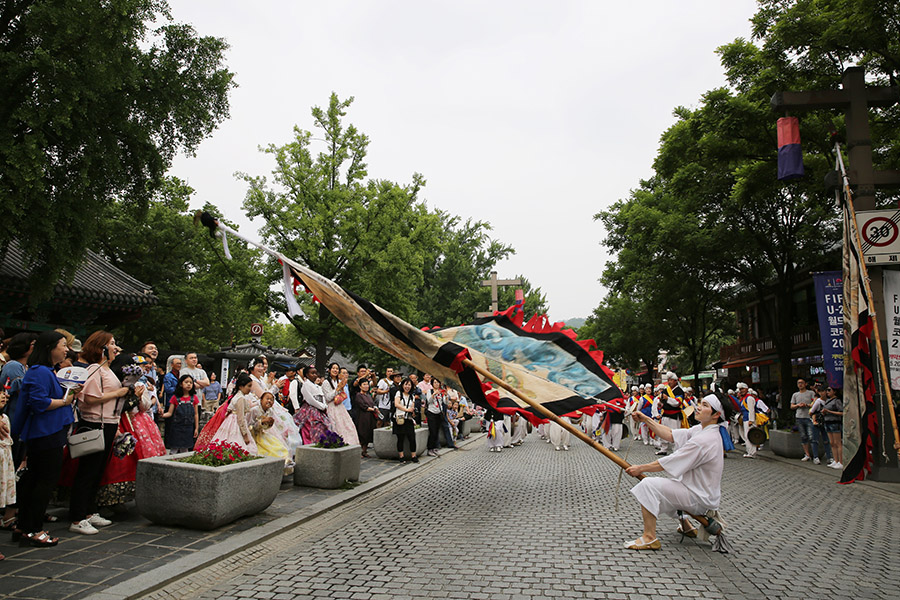
Jeonju Kijeop Nori, also known as Yonggi (dragon-flag) Nori, is a local traditional folk play used to be held in the villages of the Samchun-dong and Pyunghwa-dong districts. The performers of Kijeop Nori have been invited to perform at various stages at the national level, representing the Jeonbuk Province. I thank the performers for the marvellous play in a hot late Summer afternoon.

Jeonju Hanok Village is more fun on Saturdays! The royal guard changing ceremony is being held at every Saturday 2PM, from Spring to Fall. Jeonju Kijeop Nori is being held at every Saturday 3:30PM in the village. If you’re planning to visit Jeonju for the weekends, don’t miss them!


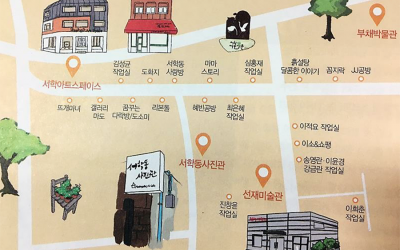
최신 댓글